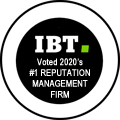Location Targeting Now a Part of adCenter, Following AdWords
Ryan Buddenhagen, February 22, 2012
 Microsoft Advertising adcenter is evolving, and the latest changes move the platform closer to Google Adwords in an effort to make terminology and functionality similar to what marketers are using with Google. Ultimately, this is a good move for Microsoft, paid search, and those marketers managing pay per click campaigns and it shows that Microsoft is realistic in their understanding of adcenter's place in paid search. The reality is that Microsoft's advertising platform is second to Google's Adwords, and acknowledging this allows Microsoft to use this fact to their advantage.
Microsoft Advertising adcenter is evolving, and the latest changes move the platform closer to Google Adwords in an effort to make terminology and functionality similar to what marketers are using with Google. Ultimately, this is a good move for Microsoft, paid search, and those marketers managing pay per click campaigns and it shows that Microsoft is realistic in their understanding of adcenter's place in paid search. The reality is that Microsoft's advertising platform is second to Google's Adwords, and acknowledging this allows Microsoft to use this fact to their advantage.
Aligning their functionality to that of the industry standard (Google Adwords) allows marketers to utilize both platforms without the need to learn new methodologies and applications. However, once familiarity and a degree of comfort are achieved by its users, Microsoft, in time, can introduce new features that differentiate it from Adwords in an effort to widen their offerings and slowly gain market share. Microsoft has nothing to lose aligning their methods to Adwords at the moment as differentiation can happen in time.
What Exactly Has Changed?
We've discussed the Yahoo! and Microsoft Search Alliance and the adcenter before as Todd Bailey touched on its formation and the rolling out of the platform in the UK, France, and Ireland in an SEOServices.com piece from mid-January. Now, individual targeting options take the form of "language" and "target location" and the distribution channel "market" is being removed. Tina Kelleher in her adcenter blog post outlining the changes (complete with screenshots of the new features), details that marketers can receive a greater amount of relevant volume from the target location option that is now standard.
Marketers will be able to target users in a physical location as well as those that have intent to "do business in your target location areas." This intent element widens the advertising opportunities but also allows for more focused pairings of pay per click with SEO campaigns that optimize on and off-site content to drive targeted traffic.
Those that have intent to do business in your target location area show it by the location detail they enter into their queries. Optimized content utilizing international SEO practices then become a central issue here. Further, marketers can choose all the countries where the selected language is spoken, "bundles" of countries, one specific country, and a certain state, territory, or city. Partnering with an SEO company to design a coordinated marketing effort that capitalizes on organic search of these queries as well presents additional opportunities. Doing so enables advertising companies to maximize their targeting goals.





